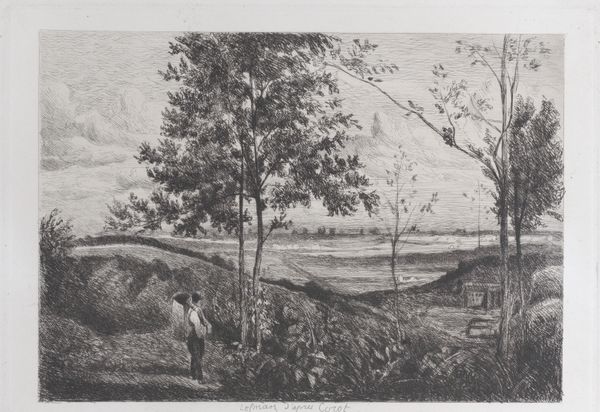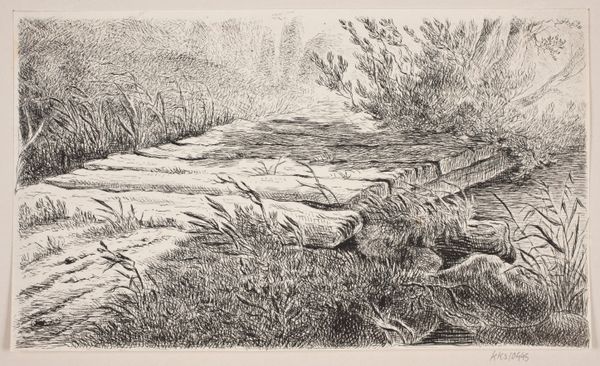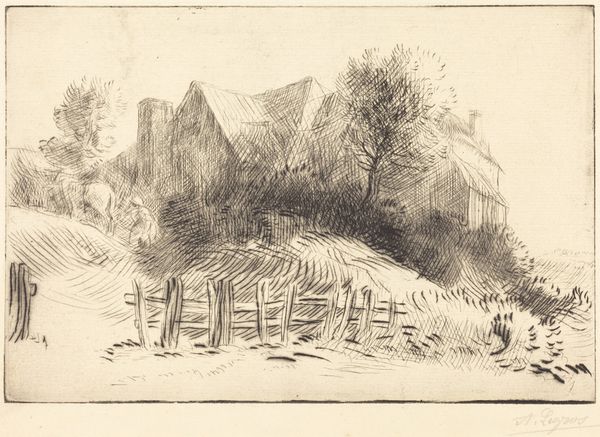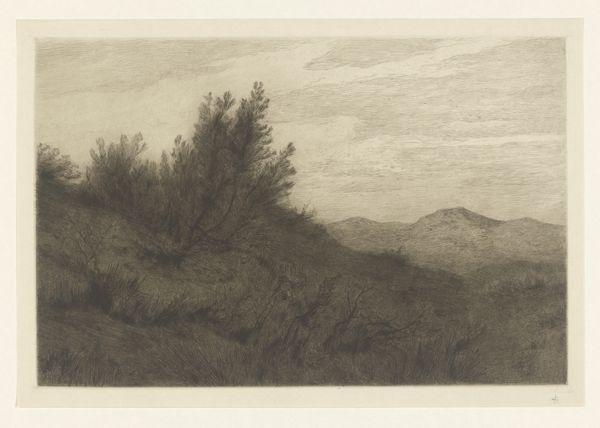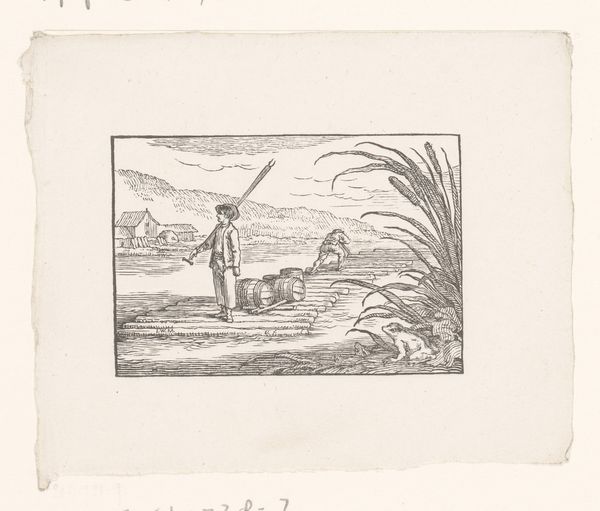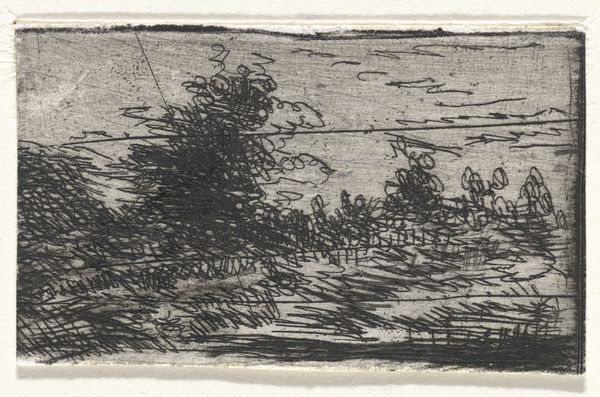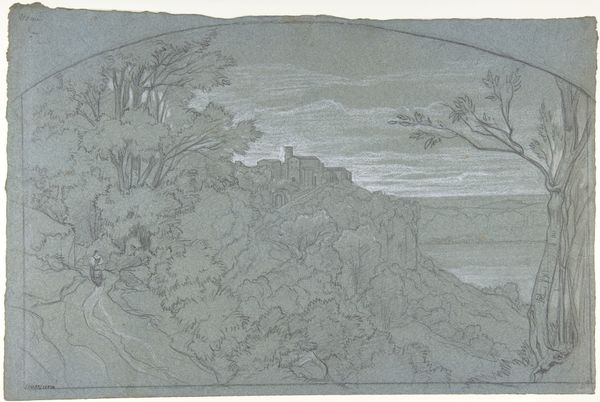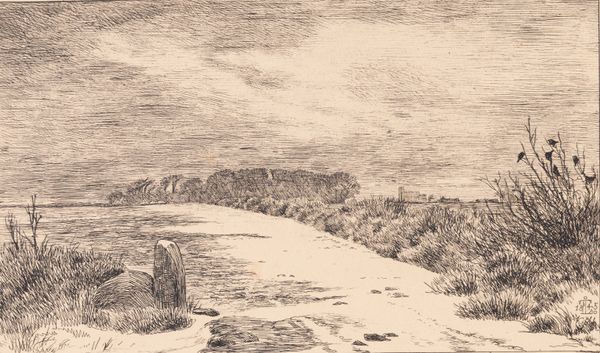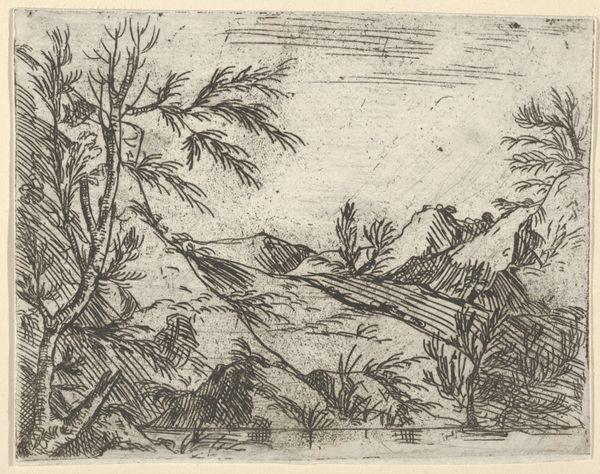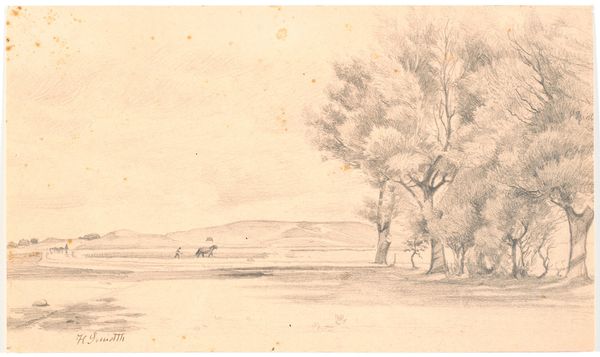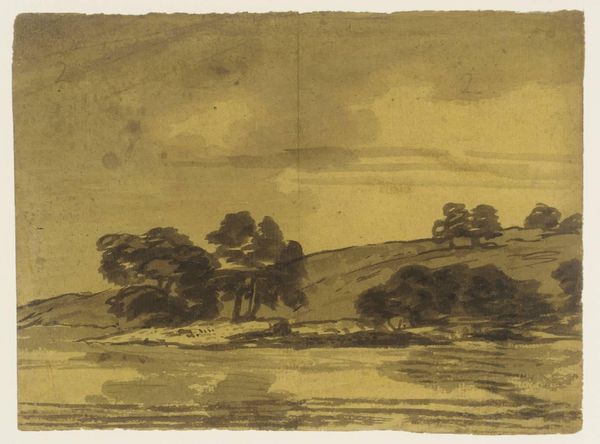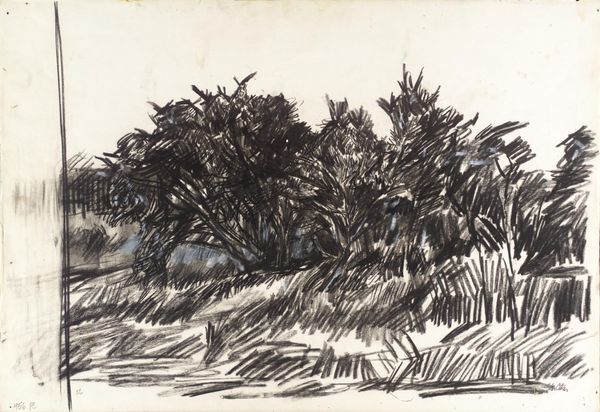
print, etching
# print
#
etching
#
landscape
#
line
#
realism
#
monochrome
Dimensions: height 116 mm, width 200 mm
Copyright: Rijks Museum: Open Domain
Curator: Before us is Jan Veth's "Landscape with Water, Reed, and Rowboat," an etching dating from 1887, currently held in the Rijksmuseum. Editor: It's striking how raw and immediate the landscape feels, even rendered in monochrome. There's a density in the foreground, with the reeds almost vibrating. Curator: Veth, a prominent figure in the Dutch Revival, positioned himself at the intersection of art, literature, and politics. His landscapes often evoke a sense of melancholic reflection. We see here the working class rural environment and how they spent their pastimes in those settings. Editor: Interesting. From a materialist perspective, etching offers the artist a unique opportunity. The metal plate becomes a site of labor, scratched and bitten by acid, before transferring the image to paper. The repetition inherent in printmaking allows for broader consumption. Curator: Absolutely, printmaking democratized art in a way previously unimaginable. Veth also had strong political views, so the reproducibility of print becomes relevant. The image reaches a wider audience. Consider his social activism; these serene landscapes provided an accessible entry point to contemplate broader issues of land use and access. How the common man uses landscape versus upper class landscapes is always being compared here. Editor: I am particularly drawn to the unfinished quality – you can see the plate edges, even a blemish at the top. It reveals the process. This is not a flawless, idealized landscape but a tangible object, carrying the marks of its own making. Veth’s choice of etching, this accessible medium, resonates with the rise of socialist movements across Europe at this period. The means of production reflecting broader social forces. Curator: This perspective allows us to explore themes of accessibility and distribution, resonating with Marxist values and the artist’s progressive ideals. Editor: Exactly. Looking at this piece from the perspective of labor is enlightening; the work necessary in the physical labor of producing a piece but also those figures whom are present. Curator: Thinking about Veth’s involvement in social movements offers a new appreciation for his artistic choices and how art, even landscape art, plays a role in shifting ideological landscapes. Editor: Yes, analyzing process and materials provides essential context to fully comprehending "Landscape with Water, Reed and Rowboat". Thank you!
Comments
No comments
Be the first to comment and join the conversation on the ultimate creative platform.
